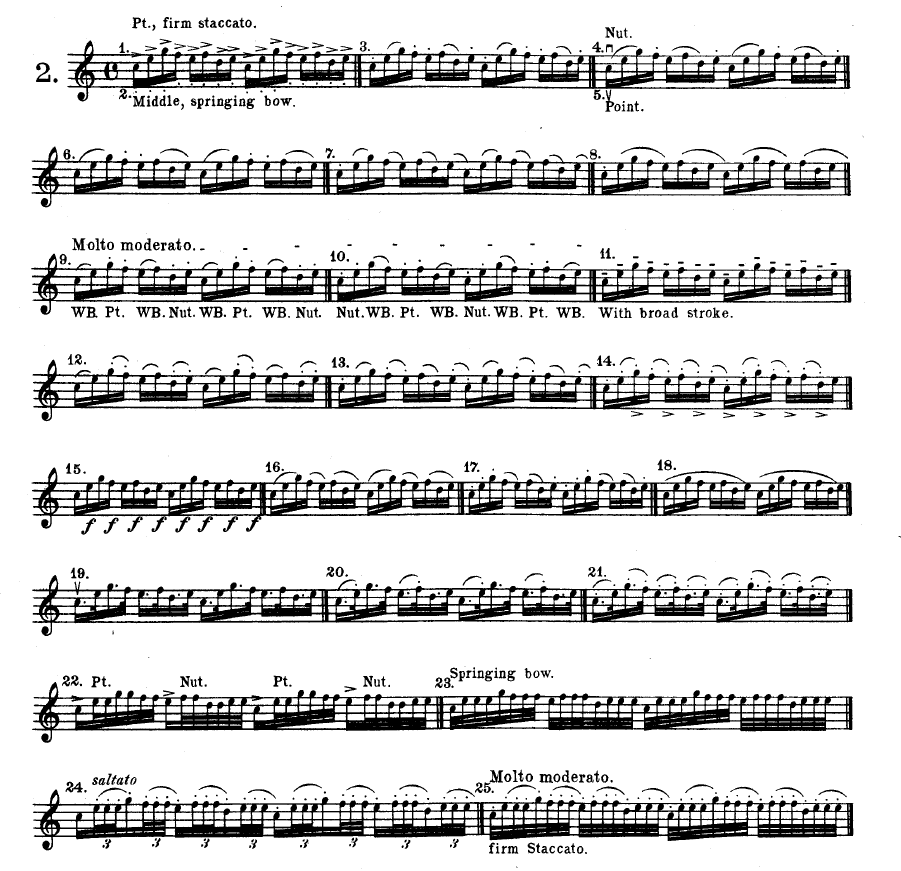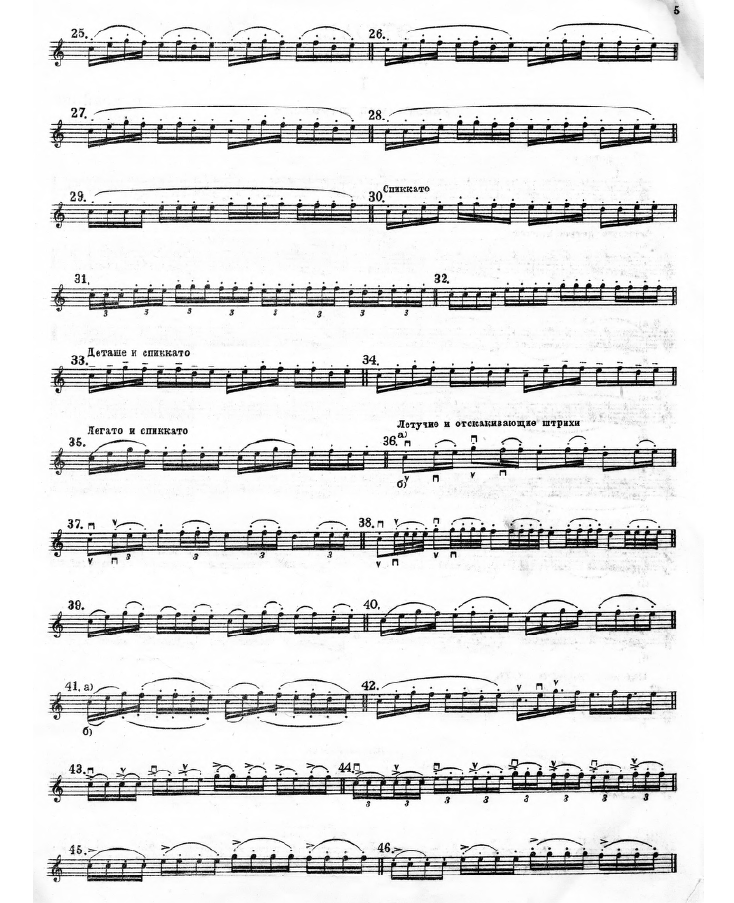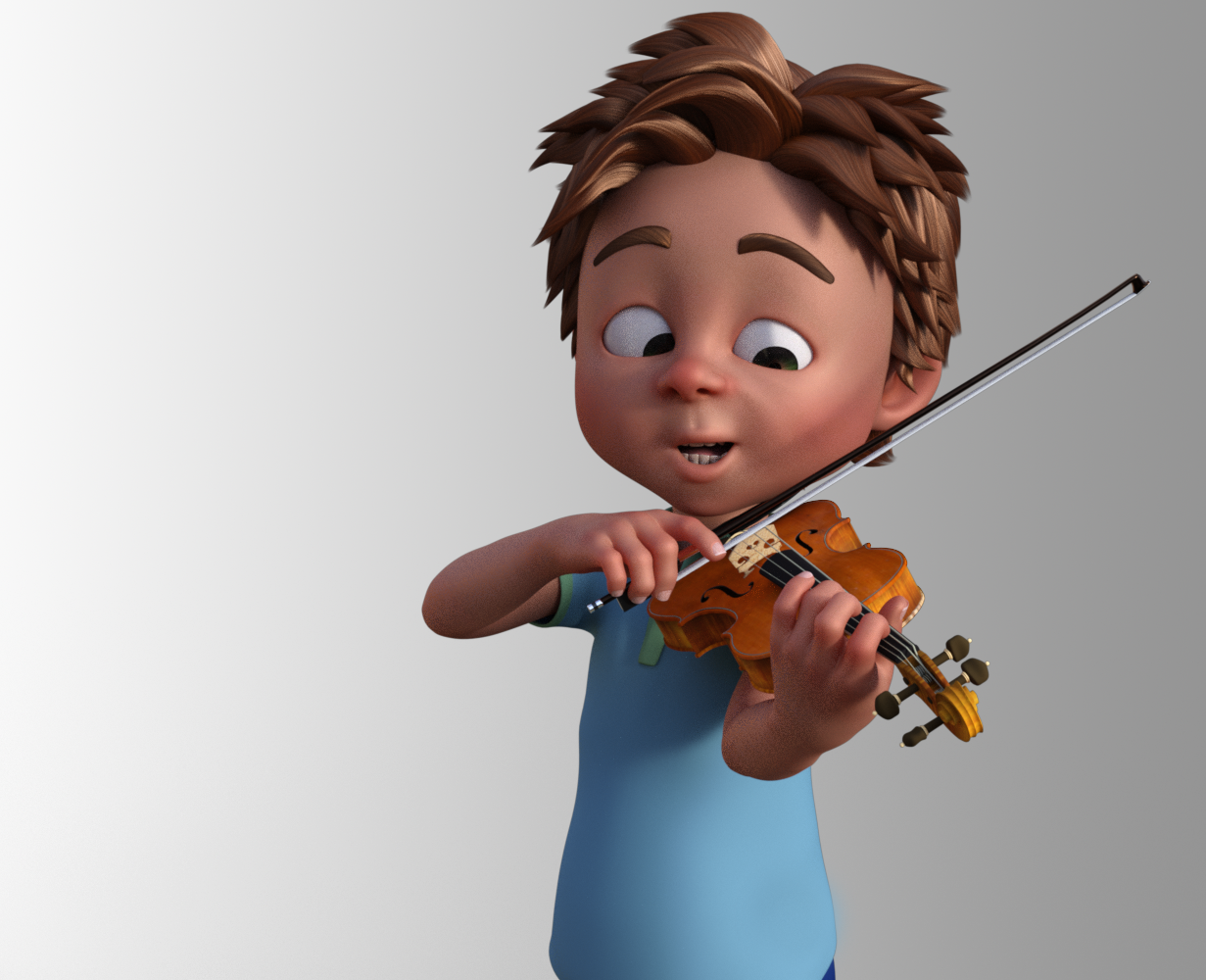Article written by Fiona Vilnite
Rodolphe kreutzer (1766 – 1831) wrote his now famous collection of “Études ou caprices” [etudes or caprices] in about 1805. This popular second etude has become a mainstay of the violin learning repertoire.
Whilst these etudes were originally written for solo violin, this video includes a new ragtime accompaniment, which can be used as fun alternative to practising with a metronome!
The practice video includes a score of the etude with moving cursor to help sight read and locate any areas that require more practice. The video also includes 3 different speeds and a close-up of the left hand.
Practice tips:
- If this is a new etude for you: listen to the etude before playing it; then listen to the accompaniment and look at the violin score. Can you imagine how the violin will sound?
- Try “playing” along with the video without the bow, using the left hand only, firstly at the slowest tempo;
- Play along with the accompaniment;
- Make a note of the locations of any difficult areas (areas that are not fluent, etc);
- Make sure you understand the fingering (Between which notes/fingers are the semitones? Are there any areas that require a position change?)
- Repeat these areas without the accompaniment a few times with a relaxed hand;
- Listen to every note you play- make the nicest sound you can (adjust any notes that need better intonation or sound quality);
- Repeat with the accompaniment – try adjusting the speed of the accompaniment (in YouTube settings, and/or by choosing one of the 3 speeds in the video);
- Make sure you have a comfortable left hand at all the different speeds;
- Experiment with different rhythms and bowings (see below);
- Try playing along with the accompaniment using these bowings and rhythms, etc.
- Have fun!
Background, analysis of the etude; Kreutzer, the composer and teacher:
There is no doubt that Rodolphe Kreutzer was both an established violinist and composer. His compositional output includes no less than 19 violin concertos. His nineteenth concerto shows a mature compositional style which reminds the listener of some of the technical elements heard in his more famous etudes, together with an interesting mix of sturm und drang, reminiscent of Haydn or late Mozart and Beethoven, together with a virtuosity that anticipates the virtuoso passages found in the concertos of Charles Auguste de Bériot (1802 – 1870).
The second etude from his collection of 40 (later 42) was originally published with a set of bowing alternatives and rhythms which essentially help to develop what Ivan Galamian later referred to as “correlation” in violin playing – coordination of left and right hand movements. Additionally, the bowing exercises that Kreutzer introduces helps to gain skill with the violin bow that was evolving out of the baroque “swan-head” style to the classical and early romantic style bows. With their more hammer-like tips, these newer bows enabled the player to play nearer the point of the bow with more definition and energy and could develop the martele stroke that became so characteristic in this era.
It is interesting to note, that the first edition of the etudes published around 1805 includes 15 bowing patterns (see fig. 1), whilst subsequent editions include a gradually growing number of bowing patterns and also different rhythms. Abram Yampolsy’s edition from 1950 includes no less than 46 different patterms (see fig.4). This may well indicate the usefulness of the concept of the bowing exercises for developing fluency and technical skill with the bow. With each generation of violinists/teachers adding something of their own, this Kreutzer etude has become a quasi living historical musical and pedagogical document – reflecting musical and technical developments in violin playing throughout the two hundred years or so of the etude’s existence.
Figure 1 (below): The 15 bowing patterns that appeared in the first edition in 1805

By about 1850, Ferdinand David’s edition features 20 bowing patterns (see figure 2).
Figure 2: The 20 bowing patterns that appear in Ferdinand David’s edition in 1850

By 1894 Edward Singer’s edition includes 25 bowing patterns (see fig. 3):
Figure 3: The 25 bowing patterns of Edward Singer in 1894

And in 1950, Abram Yampolsy’s edition includes 46 different bowing patterns on two pages:
Figure 4: The 46 bowing patterns of Abram Yampolsky in 1950


What is your fourite bowing pattern? Are any of them particularly difficult (or easy)? Do you find them helpful in developing fluency? Can you think of your own bowing patterns or rhythms?
The violin sheet music for the etude can be downloaded HERE.
And HERE is the piano accompaniment, should you wish to play it in a concert 🙂
Thank you for donating – it will help me continue to produce practice videos and sheet music and to compose and arrange fun and interesting music for strings. Many Thanks!
Happy Practising!

